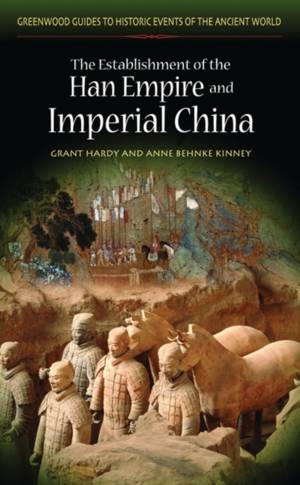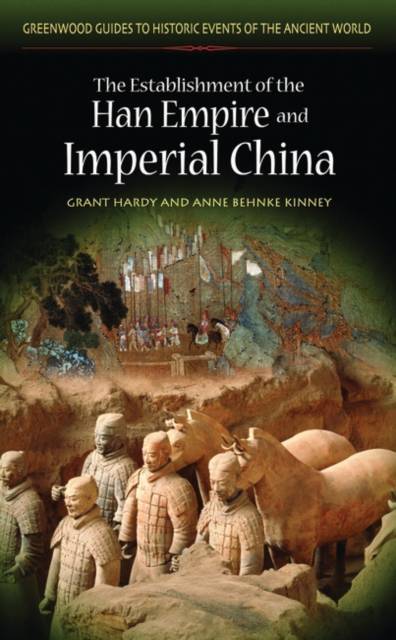
- Retrait gratuit dans votre magasin Club
- 7.000.000 titres dans notre catalogue
- Payer en toute sécurité
- Toujours un magasin près de chez vous
- Retrait gratuit dans votre magasin Club
- 7.000.000 titres dans notre catalogue
- Payer en toute sécurité
- Toujours un magasin près de chez vous
96,95 €
+ 193 points
Description
The Han Dynasty created an enduring Chinese empire comparable to the Roman Empire. In this book, narrative chapters, biographical sketches, and translated primary documents give readers a unique overview of this important founding dynasty.
The Han Dynasty (206 B.C.E. to C.E. 221) ruled a large prosperous Chinese empire that was roughly contemporary with the Roman Empire and comparable in size. The Han was founded by Liu Bang who ruled as Emperor Gaozu. The Han emperors turned away from the harsh rule of their Qin predecessors and promoted Confucianism and other schools of thought while retaining some of the useful autocratic features of Legalism. Under Wudi (140-87 B.C.E.) the empire expanded to include parts of Central Asia, Korea and Vietnam. Under the Han dynasty the Chinese developed steel, the water mill, high quality stoneware (china), and paper. Designed as an introduction to the founding and consolidation of the Han Empire, this work offers information on the founding of the Han Empire; conflict between town and countryside and the empire and barbarians; technological innovations like steel and papermaking; social changes and the lives of women and children; and a comparative look at Imperial China in world history. Excerpts from Confucius on government, recently found Qin laws written on bamboo strips, and contemporary historical accounts lend depth and immediacy to the work. Brief biographies of key rulers, rebels, and philosophers give readers a look at events through the eyes of participants. An annotated bibliography, index, chronology, glossary, and 26 illustrations and maps round out the book.Spécifications
Parties prenantes
- Auteur(s) :
- Editeur:
Contenu
- Nombre de pages :
- 220
- Langue:
- Anglais
- Collection :
Caractéristiques
- EAN:
- 9780313325885
- Date de parution :
- 30-03-05
- Format:
- Livre relié
- Format numérique:
- Genaaid
- Dimensions :
- 170 mm x 244 mm
- Poids :
- 603 g







